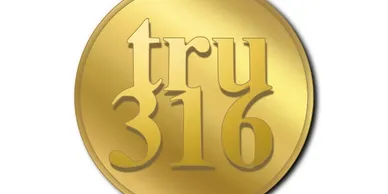
(See below for links for further study.)
Genesis 2:24.
While my wife Joy and I were doing our doctoral studies in Strasbourg, France, I gained access to a centuries-old copy of the translation John Calvin used of the Bible into French. Also, in a copy of Calvin’s Commentaries, I saw that Calvin had misinterpreted the word in Genesis 2:18 that means “partner,” or “help,” and described the woman as being “like a cook’s helper.” He held to the false doctrine that woman had been created to be subservient to man.
This study, based on Episode 3 of The Eden Podcast, focuses on God’s marriage of the man and woman and what God had in mind for marriage.
Exercise #1: Establish what God was revealing to the man about an ideal counterpart.
1. Read Genesis 2:7, 15, 18-20. What did the man observe about the animals and birds that showed him he was unique and alone as a human being?
2. Read Genesis 2:21-22. Why do you think God made the woman in this way? How do the following passages help explain God’s intention?
Genesis 1:1-3
Genesis 2:23
Genesis 2:24
Deuteronomy 6:4
John 1:1-3
John 10:30
John 17:11
Ephesians 5:31-32
The ideal pattern. This first marriage, and the description of marriages to come, is the ideal pattern for all men and women to follow, a pattern with four points:
(1) Each member of the union to be, separately, first knows God personally.
(2) The man leaves his birth family and together with his wife they establish a new family unit. His primary allegiance is no longer to his parents but to her.
(3) When the man leaves his parents to join his wife, his parents and all society is put on notice that here is a new family unit.
(4) Because they are joined together in the presence of God, the church, the body of believers, recognizes their new family unit.
Exercise #2: Understanding “to-leave”—azav—and “cleaves”—dabaq.
1. How does Ruth 1:16-17 shed light on what is involved in “to-leave.”
2. From Joshua 22:5 and Ruth 1:14 describe “cleaves.”
3. Remembering that God is Three-in-One, how does Deuteronomy 6:4 reveal God’s “one flesh” design for marriage?
4. From Study Guide 1, explain how Genesis 2:25 is at the apex of the chiasm.
Some people add to the Genesis account concerning relationships between women and men. They take what happened later on in humanity’s sinful history and project that back into the Garden of Eden, specifically with the ideas of “hierarchy” and “authority.”
Exercise #3: Identifying references to human relationships that involve authority in Genesis 1-2.
1. In each of the following passages, God is described as creator and commander. Therefore, God has the authority. From the following passages, who had ultimate authority?
· Genesis 2:15
· Genesis 2:16
· Genesis 2:19
· Genesis 2:21-22
2. God also granted authority. To whom did God give authority, and the authority to do what?
The Man
The Woman
Genesis 1:28
Genesis 1:29
Genesis 2:15 with 2:18, 24
Study Guide prepared by Joanne Hagemeyer.
See below for links to resources for further research.
1. Listen to this Episode’s Podcast (https://tru316.com/gen-2%3A24-marriage-model)
2. Blog post on ‘ezer kenegdo (https://tru316.com/blog/f/on-marriage-by-dr-joy-fleming)
3. Dr. Joy Fleming’s doctoral research: The e-book summary in 48 pages (https://www.amazon.com/Man-Woman-Biblical-Unity-Theology-ebook/dp/B0792MSWBP/ref=sr_1_1?ie=UTF8&qid=1546467124&sr=8-1&keywords=Joy+Fleming+Man+and+woman)
4. Join the Tru316 Project! (https://www.patreon.com/Tru316Project)
[John Calvin | Pixabay.com]

